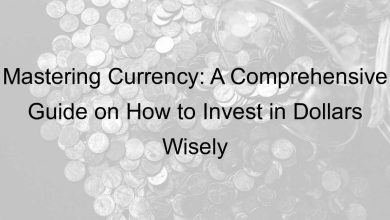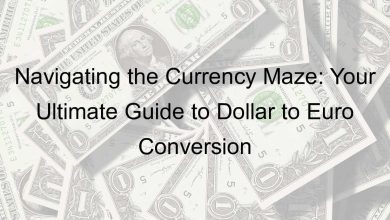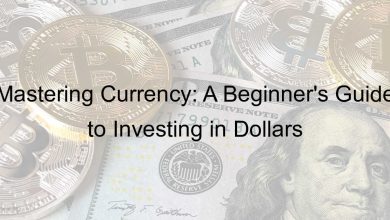Navigating the Dollar Exchange Rate: Tips for Savvy Travelers and Investors

Traveling or investing abroad can be an exciting journey, but understanding the complexities of currency fluctuations is crucial. The dollar exchange rate plays a significant role in determining how far your money can go, whether you’re exploring new destinations or managing investments. In this article, we will explore practical tips to help you navigate the dollar exchange rate effectively, ensuring both travelers and investors make the most of their financial decisions. By grasping the nuances of exchange rates, you can enhance your experience and maximize your potential returns.

Understanding the Dollar Exchange Rate: Key Factors and Trends
The dollar exchange rate plays a significant role in our global economy. It represents the value of the US dollar compared to other currencies, influencing everything from trade to investments. However, understanding this complex phenomenon requires examining several underlying factors.
Key Influences on the Dollar Exchange Rate
- Economic Indicators: Metrics like GDP growth and unemployment rates can indicate the economic health of the United States, impacting investor confidence.
- Interest Rates: The Federal Reserve’s decisions on interest rates can drive currency strength; higher rates usually attract foreign investments.
- Political Stability: A stable political environment promotes confidence, often leading to a stronger dollar.
Yet, the dynamics of currency exchange are rarely straightforward. For instance, while a robust economy generally favors a stronger dollar, international events can skew perceptions and shift trends unexpectedly. Hence, investors must stay abreast of not just economic data but also geopolitical developments.
In conclusion, grasping the dollar exchange rate requires recognizing a web of factors, each influencing the other, sometimes in ways that defy intuition.

Top Tools and Apps for Monitoring Exchange Rates on the Go
In today’s fast-paced world, staying updated on exchange rates is crucial for travelers and international business folks alike. With numerous tools and apps at your disposal, connecting to real-time market fluctuations has never been easier.
1. XE Currency
XE Currency provides a user-friendly interface that allows you to track multiple currencies simultaneously. What’s impressive is its ability to offer historical data, which can aid in making informed decisions. However, some may find the plethora of options overwhelming at first.
2. OANDA
For those who crave accuracy, OANDA stands out. This platform not only delivers real-time rates but also offers advanced charting tools. Yet, it may require a bit of a learning curve for newcomers.
3. Revolut
Revolut blends banking with currency exchange, making it a practical choice for users on the go. However, reliance on mobile connectivity could be a drawback when traveling in remote areas.
Ultimately, the right choice depends on your unique needs. Whether it’s simplicity or advanced features, there’s something out there for everyone.
When to Exchange Currency: Timing Your Transactions for Maximum Value
Timing your currency exchange can significantly impact your financial outcomes. The foreign exchange market is perpetually shifting, influenced by a myriad of factors. One crucial aspect is the market’s volatility. Rates fluctuate due to geopolitical events, economic indicators, and even sudden market sentiment changes. Therefore, it’s essential to stay informed and vigilant.
Many people ponder the best time to exchange their currency. While there’s no universal answer, understanding historical trends can provide insight. For instance, specific seasons may offer better rates; holidays or major events often result in spikes or drops. Consequently, monitoring trends over time becomes vital for savvy exchange. Additionally, consider using tools like currency alerts. These can notify you of favorable rate shifts, providing an edge in decision-making.
Exchange Early or Wait?
Deciding whether to exchange early or hold off can be tricky. In some cases, waiting for a higher rate could yield substantial benefits. However, you risk losing if the market swings unfavorably. Ultimately, a balanced approach, factoring in your personal needs and the current market conditions, leads to more informed decisions. So, invest time in research and approach currency exchange strategically.
Smart Strategies for Currency Exchange: Avoiding Fees and Pitfalls
Currency exchange often feels like navigating a maze, filled with hidden fees and unforeseen challenges. By employing thoughtful strategies, you can dodge these pitfalls. Let’s delve into some smart approaches that can simplify your currency dealings.
1. Research Local Rates
Before making any exchange, it’s crucial to check the local exchange rates. Visit reliable financial websites to grasp the current market values. Understanding these rates empowers you to recognize unfair practices at brick-and-mortar outlets.
2. Use ATMs Wisely
ATMs can offer better rates than currency exchange offices, but they’re not without risks. Look for ATMs owned by major banks to minimize service fees. It’s also wise to select the option for transactions in the local currency—this can help you avoid hidden costs.
3. Consider Online Services
Online currency exchange platforms often provide competitive rates and lower fees. However, it’s essential to read reviews and ensure that the service is reputable and secure. This can save you a significant amount by avoiding unnecessary charges.
4. Monitor Fees
Always inquire about any potential fees before proceeding. Some services may boast low exchange rates but add hefty fees, negating any benefits. Keep an eye out for transparency in all transactions.
By being informed and proactive, you’ll navigate the world of currency exchange with greater confidence. In this way, you can maximize your value and enjoy your travels or transactions without undue stress.
The Impact of Global Events on Dollar Value: What Travelers and Investors Should Know
In our interconnected world, the value of the dollar doesn’t just fluctuate due to domestic policies; it reacts to a myriad of global events. For travelers and investors, understanding these shifts is crucial. Economic indicators, political unrest, and even natural disasters can all contribute to the dollar’s strength or weakness.
Economic Indicators and their Effects
Consider how a report indicating higher employment rates in the U.S. can bolster confidence in the dollar. Conversely, tension in trade relations can raise uncertainty, leading to a dip in currency value. This volatility might seem daunting, especially for investors looking to maximize returns, but it also presents opportunities for savvy travelers seeking favorable exchange rates.
The Ripple Effect
This brings us to the fascinating phenomenon of the ripple effect. When one country faces a crisis, others may experience simultaneous shifts. For instance, geopolitical tensions in Europe can lead to unexpected consequences for the dollar, impacting everything from the prices you pay abroad to investment strategies.
In conclusion, staying informed about these interrelated aspects will not only enhance travel experiences but also empower investment decisions.
Protecting Your Investments: Hedging Against Currency Fluctuations
In today’s interconnected financial landscape, currency fluctuations can significantly impact your investments. Thus, it’s crucial to adopt strategies that mitigate these risks. Hedging, a popular method among savvy investors, offers a way to shield your portfolio from unpredictable currency movements. You might wonder, how does one effectively hedge?
Understanding the Mechanics of Hedging
Essentially, hedging involves taking an offsetting position in a related asset. For example, if you hold investments in foreign companies, you could potentially suffer losses if their currency depreciates against your home currency. Therefore, utilizing financial instruments like futures, options, or currency swaps could provide the necessary protection. However, navigating this landscape isn’t always straightforward.
Some investors may find themselves grappling with the complexities of these tools, leading to confusion. Additionally, hedging isn’t a foolproof solution; it can sometimes limit gains. Still, understanding when and how to implement these strategies is critical. After all, it’s about striking a balance between risk and reward, and every investor’s situation is unique.




